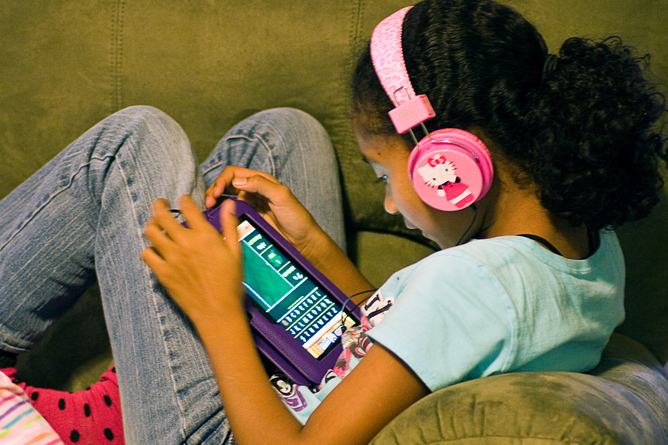
Kindle vs. Books? Children Just Don't See It That Way (Op-Ed)

This article was originally published at The Conversation. The publication contributed the article to Live Science's Expert Voices: Op-Ed & Insights.
A furious debate has been raging for some years now between adults. Are you a Kindle lover or a devotee of the good, old-fashioned book? As the e-book spreads into children’s publishing, some look in terror at the thought of our children forgetting what an actual book is as they fall for their new devices.
Technology played a bigger part than ever in this year’s London Book Fair, the major international trade show that came to an end last week. But despite this acceptance of technology as being part of the future of reading, it was unfortunate that e-books were presented at the fair as black-and-white antidotes rather than multicoloured parallels.
It is not a question of book or e-book for children. The two can complement each other.
In his keynote speech, Bill Thompson, a technology journalist by background and now head of partnership development at the BBC Archives, heralded e-books as the cornerstone of publishing in the future. For him, books are “passive” but e-books form an active part of a “digital ecosystem”.
I imagine Tim Waterstone, founder of the bookshop chain, would say the opposite, since he recently declared that e-books will go into decline.
The tendency to polarise this debate is not unique to the London Book Fair. Techno-centric approaches have troubled the relationship between technology and education for centuries. In all this “formphobia”, we seemed to have fallen prey to several inconsistencies.
Sign up for the Live Science daily newsletter now
Get the world’s most fascinating discoveries delivered straight to your inbox.
Book publishers go niche and digital books go viral. We talk about products rather than processes. We all learn on the go rather than from previous lessons. We need to pause for thought.
For a start, the new book formats that are coming into children’s publishing – book apps, ibooks or e-books – need to be linked to content. There is a big difference between the level of interactivity offered by these different formats so you really need to think about content when you choose a format.
Just like adults, children use digital and paper-based books for different purposes. If we re-cast our debates in terms of specific media and specific story content, then we can truly encourage greater product variability, quality and stability in the e-book market.
So while a pop-up book will always be the preserve of print, an interactive story works far more effectively in a digital format. The two work alongside each other, not in competition. We also shouldn’t forget that stories are diverse. They originate and propagate in multilingual and multicultural communities.
Stories educate and change lives so their formats and forms should be varied, not limited to one or other currently preferred business model.
And particularly in the case of children’s stories, we should position the reader, that is the children, at the centre of all discussions and decisions. Children can fluidly negotiate digital and non-digital media, carrying their favourite story characters from one to another.
With the new digital tools on offer to us, we can build exceptionally immersive worlds with which children can move seamlessly between page and screen.
We can encourage story connections across platforms and even include toys, outdoor activities or self-made texts into the mix.
Extending the e-book production model to children means positioning them not only as product testers but also as authors and quality judges. There is no need to reinvent the wheel to achieve this, rather, we need to refine the application of current technological tools.
Through customisation, empowerment and personalisation options, we can provide story micro-worlds where children can suggest alternative story endings and opportunities for spin-off activities. Such story spaces can be embedded in various story formats, including non-digital books and story props.
If we invite children to play a part in such stories, we will soon realise that black and white are just two colours in a multi-coloured story world.
Natalia Kucirkova is a KTP associate for Booktrust.
This article was originally published on The Conversation. Read the original article. Follow all of the Expert Voices issues and debates — and become part of the discussion — on Facebook, Twitter and Google +. The views expressed are those of the author and do not necessarily reflect the views of the publisher. This version of the article was originally published on Live Science.









